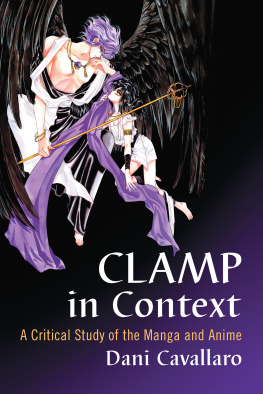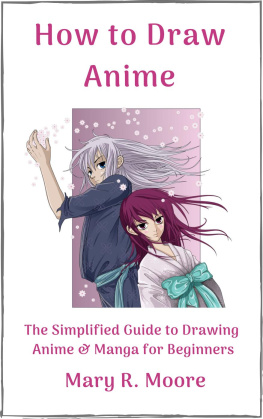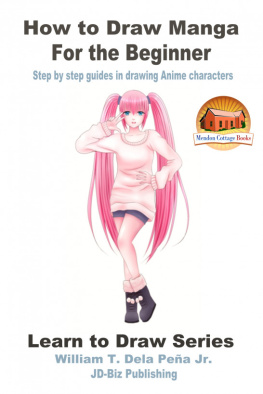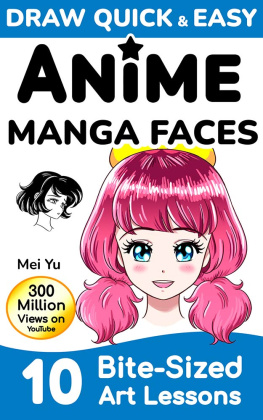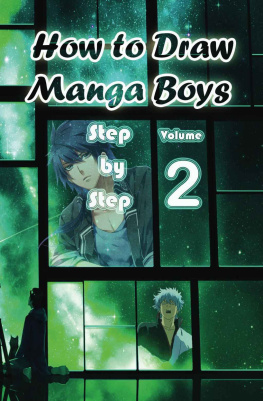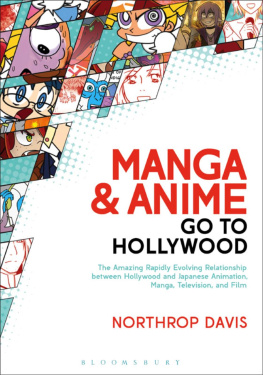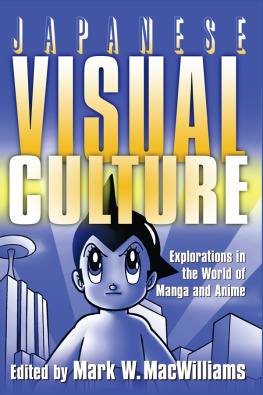
Also by Dani Cavallaro
and from McFarland
Hayao Miyazakis World Picture (2015)
The Late Works of Hayao Miyazaki: A Critical Study, 20042013 (2015)
Japanese Aesthetics and Anime: The Influence of Tradition (2013)
Synesthesia and the Arts (2013)
Art in Anime: The Creative Quest as Theme and Metaphor (2012)
Kyoto Animation: A Critical Study and Filmography (2012)
The Fairy Tale and Anime: Traditional Themes, Images and Symbols at Play on Screen (2011)
The World of Angela Carter: A Critical Investigation (2011)
Anime and the Art of Adaptation: Eight Famous Works from Page to Screen (2010)
Anime and the Visual Novel: Narrative Structure, Design and Play at the Crossroads of Animation and Computer Games (2010)
Magic as Metaphor in Anime: A Critical Study (2010)
The Mind of Italo Calvino: A Critical Exploration of His Thought and Writings (2010)
Anime and Memory: Aesthetic, Cultural and Thematic Perspectives (2009)
The Art of Studio Gainax: Experimentation, Style and Innovation at the Leading Edge of Anime (2009)
Anime Intersections: Tradition and Innovation in Theme and Technique (2007)
The Anim Art of Hayao Miyazaki (2006)
The Cinema of Mamoru Oshii: Fantasy, Technology and Politics (2006)
CLAMP in Context
A Critical Study of the Manga and Anime
Dani Cavallaro

McFarland & Company, Inc., Publishers
Jefferson, North Carolina
LIBRARY OF CONGRESS CATALOGUING DATA ARE AVAILABLE
BRITISH LIBRARY CATALOGUING DATA ARE AVAILABLE
e-ISBN: 978-0-7864-9010-3
2012 Dani Cavallaro. All rights reserved
No part of this book may be reproduced or transmitted in any form or by any means, electronic or mechanical, including photocopying or recording, or by any information storage and retrieval system, without permission in writing from the publisher.
Front cover: Illustration from the 1989 manga RG Veda (CLAMP)
McFarland & Company, Inc., Publishers
Box 611, Jefferson, North Carolina 28640
www.mcfarlandpub.com
To Paddy, with all my love
A line is a dot that went for a walk.Paul Klee
PREFACE
Film will only become an art when its materials are as inexpensive as pencil and paper.Jean Cocteau
Since the serialization in Wings magazine of its debut manga RG Veda, CLAMP has steadily asserted itself as one of the most widely renowned teams of manga artists, leaving a durable imprint in every established genre while also devising some novel formulae along the way. Taking a selection of CLAMP manga and anime inspired by those manga as its object of study, this book seeks to document the teams incremental creation of a graphic constellation of unparalleled appeal. Endowed not solely with stylistic distinctiveness but also the caliber of a comprehensive cultural structure, CLAMPs output ultimately stands out as a veritable multiverseor ensemble of multiple hypothetical universesabetted by both worldbuilding flair and visual vitality.
The book comprises four chapters. Chapter 1, CLAMPs Philosophy, examines a salient range of aesthetic perspectives and artistic experiments which can help us appreciate the broader philosophical underpinningsand attendant conceptual importof the works under scrutiny in the chapters to follow. In Chapter 2, Epic Reinventions, the analysis focuses on CLAMPs dedication to the invention of elaborate narrative constructs which appear to replicate the classic epic modality in their complexity and breadth, yet challenge many of its fundamental objectives and mores in a courageous pursuit of alternative world pictures. RG Veda, Tokyo Babylon, Magic Knight Rayearth and X are of special relevance to this segment of the discussion. XX2 Double X and X: An Omen are also briefly examined. Chapter 3, Transworld Migrations, engages with CLAMPs legendary passion for multilayered universes affording virtually infinite opportunities for cultural, historical and stylistic leaps of often vertiginous intensity across time and space. Cardcaptor Sakura, Tsubasa: RESERVoir CHRoNiCLE, xxxHOLiC and Kobato constitute this chapters pivotal titles. Additional productions deserving rapid inspection in this context are the two CLAMP in Wonderland videos, Miyuki-chan in Wonderland, Sweet Valerian and the Wish special. The manga Legend of Chun Hyang, Shirahime-Syo: Snow Goddess Tales, Legal Drug and Gate 7 are also referred to in the course of the discussion. In this chapter, the discussion devotes special attention to one of CLAMPs most prominent and most cherished achievements of recent years, Tsubasa: RESERVoir CHRoNiCLE. In so doing, it comments on the relationship between the original drawn version of the saga and its anime adaptation across two TV series, two OVAs and a movie, while also engaging with portions of the parent manga which have not been translated into moving images. Insofar as the analysis of Tsubasa: RESERVoir CHRoNiCLE is situated approximately halfway through the book, this titles central significance to both CLAMPs own corpus and this particular study is here highlighted in structural, as well as conceptual, terms. With Chapter 4, Technologies of Subjectivity, the discussion concentrates on CLAMPs symbolic interpretation of human identity as an unstable outcome of the intersection of science, fantasy and politics: a process to which humor and pathos contribute in equal measures. Angelic Layer, CLAMP School Detectives, Chobits, Mouryou no Hako and Code Geass are the key works examined in this chapter. Reference is also made, where relevant, to the Chibits and the Clover specials, and to the manga Duklyon: Clamp School Defenders, Man of Many Faces, Suki, and The One I Love.
The books primary texts comprise a selection of manga issuing from the CLAMP teams prolific imagination alongside their anime adaptations. In addition, they include two anime series, Mouryou no Hako and Code Geass, to which the CLAMP artists have contributed in the capacity of character designers. Comprehensive information regarding the production details of the anime explored is provided in the filmography. A further category of materials on which this study assiduously relies includes the twelve-volume series CLAMP no Kiseki: a set of books released in 2004 to celebrate CLAMPs fifteenth anniversary, each of which features articles, interviews, original art, original short manga and chess pieces portraying chibi versions of characters from various CLAMP manga.
Chapter 1
CLAMPs Philosophy
Good design begins with honesty, asks tough questions, comes from collaboration and from trusting your intuition.Freeman Thomas
From its modest beginnings in the mid1980s as a group of doujinshi artists, CLAMP has risen to the status of an internationally acclaimed presence in the interdependent areas of manga and anime, while the dozen members of the original circle have shrunk to just four artists: Ageha Ohkawa, Tsubaki Nekoi, Satsuki Igarashi and Mokona. As Leslie Smith has observed, since
Next page
